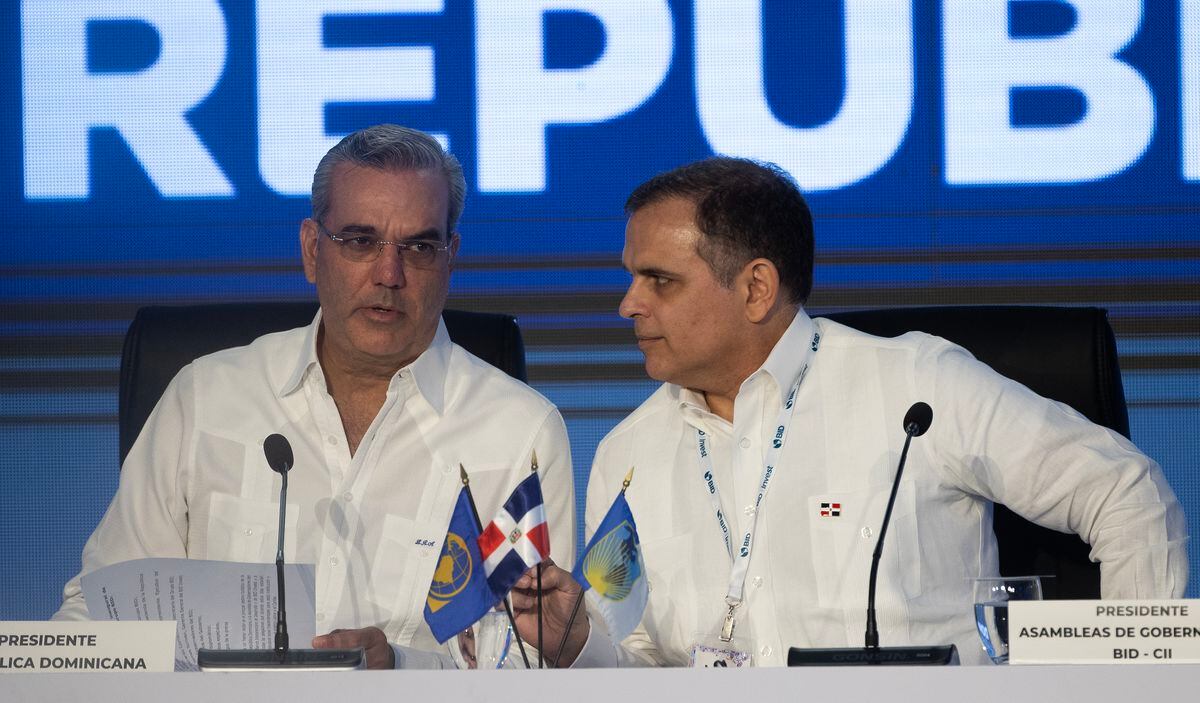A Haitian woman sells products on May 23 in Santo Domingo, Dominican Republic. Orlando Barría (EFE)
The gross domestic product (GDP) of Latin America and the Caribbean will grow 2.5% this year, according to a World Bank forecast, 0.2% more than what the multilateral estimated two months ago.
By 2023, growth is expected to slow to 1.9%, and by 2024 it will pick up to 2.4%.
The projection for the region is lower than the estimate for emerging markets worldwide, of 3.4%, an average driven by China and India, where the highest growth is expected.
“The regional slowdown reflects the tightening of financial conditions, the weakening of external demand growth, rapid inflation and high political uncertainty in some countries,” the statement published on Tuesday says about Latin America.
The Bank expects GDP per capita for the entire region to grow by just 0.6% between 2019 and 2023.
External and internal factors have driven inflation well above central bank targets in many countries, which has had a strong impact on households, the organization explains.
Food and fuel prices have accelerated rapidly, prompting monetary authorities to raise interest rates significantly, in an attempt to limit a rapid warming of the economy.
Furthermore, even though COVID-19 outbreaks have been largely contained in these countries, China has seen new outbreaks that have led to plant and factory closures, creating global supply bottlenecks.
The Russian offensive in Ukraine has also limited the supply of grains and fertilizers, which is why the prices of these raw materials have risen in international markets.
This has benefited some producing countries in Latin America.
“Prices of the region's main exports are expected to be substantially higher in 2022, but the benefits for growth will be held back by a slow response in the production of some basic products and by the increase in input costs. , including energy and fertilizers,” the Bank said in its report.
Fiscal and monetary policies are generally expected to be biased against growth in the near term, as monetary authorities tighten policy to combat inflation and the withdrawal of pandemic-related fiscal support continues.
Globally, the World Bank estimates economic growth of 2.9% this year.
“Despite the negative impact on global activity in 2022, essentially no rebound is projected next year: global growth is forecast to pick up only slightly 3% in 2023, as many headwinds, particularly high commodity prices and continued monetary tightening—expected to persist,” the report says.
“In addition, the outlook is subject to several downside risks, including intensifying geopolitical tensions, growing stagflation headwinds, increased financial instability, continued supply-side tensions, and worsening food insecurity. ”, adds the Bank.


/cloudfront-eu-central-1.images.arcpublishing.com/prisa/2C5HI6YHNFHDLJSBNWHOIAS2AE.jpeg)


/cloudfront-eu-central-1.images.arcpublishing.com/prisa/RBDI3FWLIZDXBFZRE73ADUDT4M.jpg)

/cloudfront-eu-central-1.images.arcpublishing.com/prisa/Q6UJ4IEP6ZGLZLS3MSHF7LNYOU.jpg)
/cloudfront-eu-central-1.images.arcpublishing.com/prisa/2KVLLY26ZNGK3OCBRI676KYGKA.jpg)
